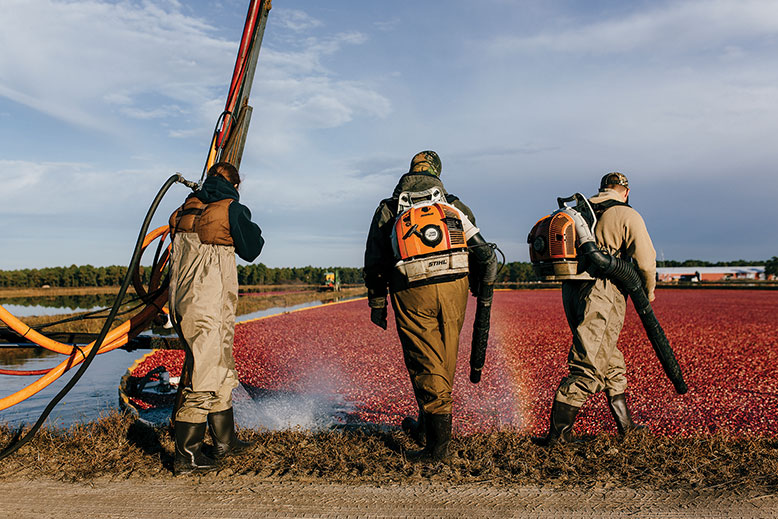The New Jersey Pinelands picked up the name the "Pine Barrens" because the European colonists found the acidic soil infertile for their crops. But that type of soil and the water-rich area is optimal for cranberries.
I visited the Pine Barrens many times with my wife and young sons, and we went to the annual Cranberry Festival twice. The festival in Chatsworth is still held in October and feels very much like an autumn harvest ritual. Of course, Thanksgiving is also a traditional time to serve cranberry relish with the turkey.
We learned a lot about cranberries and ate and drank a variety of cranberry products. Cranberry growing is a slow process and it takes several years for a cranberry bog to mature.
As they will tell you at the festival, it's not exactly like the image you might have of cranberry bogs from the Ocean Spray commercials. In those ads, two farmers in waders are standing in the bogs surrounded by floating berries.
Cranberries don't grow underwater but on vine runners in the sandy Pinelands soil. After a few cold nights in September, the berries turn red. Farmers flood the fields and ripe berries loosen and float to the surface with little encouragement, but the old "dry picking" method is also used.
 |
| Harvesters in waders corral floating cranberries into a mass. Photo by Jauhien Sasnou |
Only about 3 percent of the cranberry harvest is dry picked from pre-flooded fields in the old way and sold fresh in the produce section. Craisins, Ocean Spray's dried cranberries, were introduced in 1993.
New Jersey is the third-ranked cranberry producer in the U.S.., behind Wisconsin and Massachusetts. Out of the roughly 700 farms overall that grow cranberries for Ocean Spray, about 20 are in South Jersey and they produce between 500,000 and 600,000 barrels of cranberries a year.
Cranberries were eaten by American sailors in the colonial period to ward off scurvy. Today, Now many people eat and drink it for their antibacterial properties in fighting urinary tract infections.
 |
| 5-year old berry picker, Browns Mills, New Jersey, 1910 Photo from the National Child Labor Committee Collection at the Library of Congress |
Native peoples in NJ used cranberries as food, in their ceremonies, as a red dye and as medicine. Cranberries dried with deer meat made a kind of jerky called pemmican. a convenience food that could be kept for a long time. It is very likely that cranberries (fresh, as jelly or in pemmican) were part of that first Thanksgiving.
Cranberries got their name from the early German and Dutch settlers who thought their blossoms resembled the neck and head of a crane, hence "crane berries."
Cranberry cultivation in New Jersey goes back to 1840 when the State Board of Agriculture report shows that John Webb established a cranberry bog in Ocean County near Cassville. His crop was sold to ship merchants who sold them to whalers. Cranberries were stored onboard in barrels of cold water for the sailors to get Vitamin C to ward off scurvy.
Cranberry grower Elizabeth Lee of New Egypt boil some damaged berries that would normally be discarded and liked the jelly that remained which she sold it as "Bog Sweet Cranberry Sauce."
http://www.pineypower.com/cranberries.htm
https://njdigitalhighway.org/lesson/garden_state/cranberry_industry
https://bestofnj.com/cranberry-season-in-new-jersey

No comments:
Post a Comment